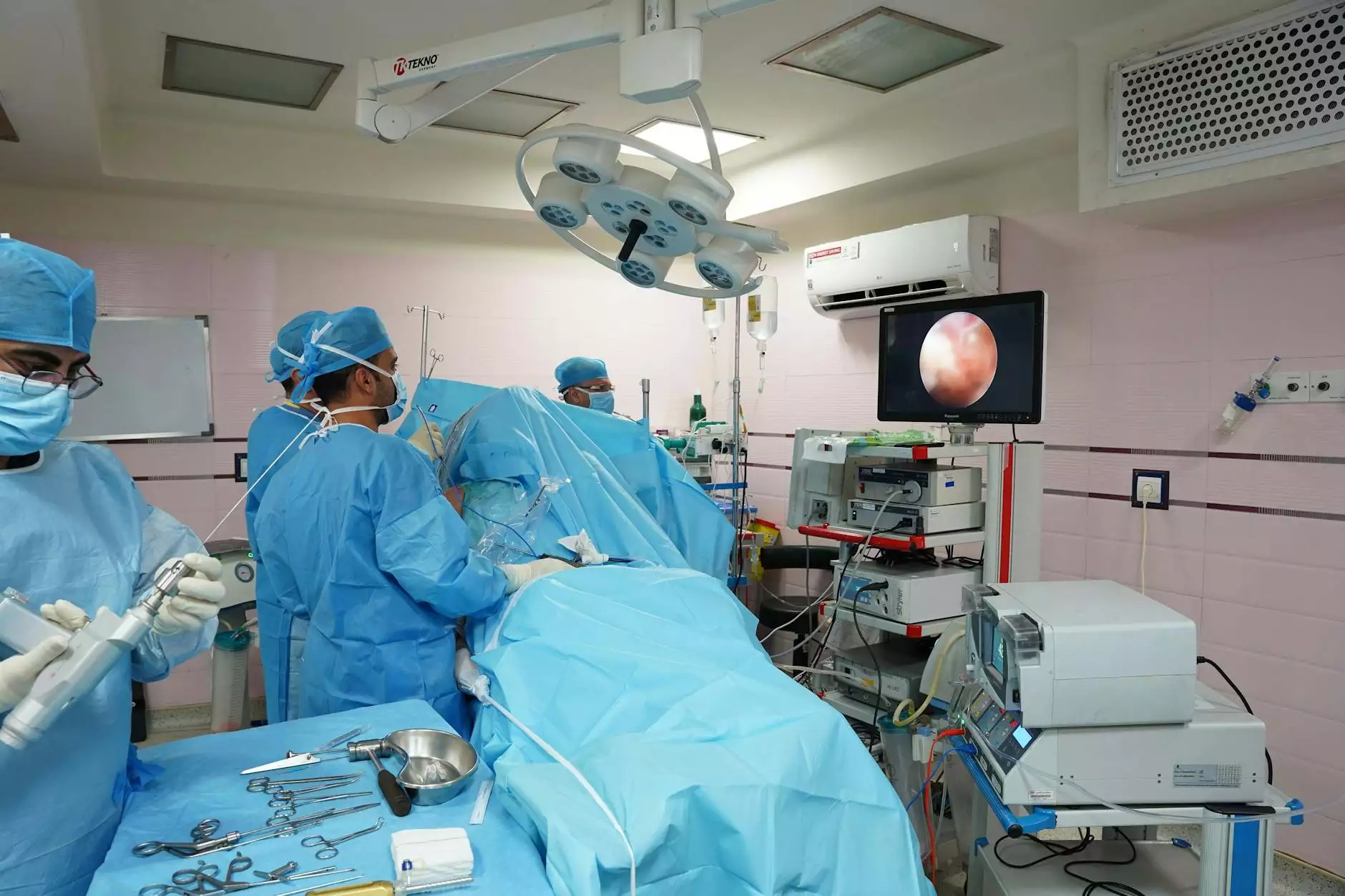Understanding Blood Clot Leg Pain: Comprehensive Insights and Solutions

Blood clot leg pain is a serious medical condition that can affect an individual's mobility and overall health. When a blood clot forms in the deep veins of the legs, it can lead to a condition known as Deep Vein Thrombosis (DVT). This condition not only causes significant discomfort but can also result in life-threatening complications if left untreated. In this article, we will delve into the nuances of blood clot leg pain, discussing its causes, symptoms, and possible treatment options.
What is Deep Vein Thrombosis?
Deep Vein Thrombosis (DVT) occurs when a blood clot forms in one of the deep veins, typically in the legs. This can lead to symptoms that range from mild discomfort to severe pain. It’s crucial to recognize that DVT is often asymptomatic, making awareness of its symptoms vital.
Causes of Blood Clot Leg Pain
There are several risk factors and triggers for developing blood clot leg pain. Understanding these can help in prevention:
- Prolonged Immobility: Sitting for long periods, such as during a long flight, can hinder blood circulation.
- Injuries: Trauma or surgery to the leg can increase the risk of clot formation.
- Medical Conditions: Conditions such as cancer, heart disease, and inflammatory bowel disease can elevate the risk of DVT.
- Hormonal Changes: Hormonal medications, including birth control pills and hormone replacement therapies, can affect clotting factors.
- Genetic Factors: A family history of blood clots can increase an individual's predisposition to DVT.
Symptoms of Blood Clot Leg Pain
Recognizing the symptoms of blood clot leg pain is crucial for early intervention. Common symptoms include:
- Swelling: The affected leg may swell noticeably.
- Pain or Tenderness: This often starts in the calf and may feel like cramping or soreness.
- Red or Discolored Skin: The skin over the affected area may become red, pale, or have a bluish tint.
- Warmth: The skin around the clot can feel warm to the touch.
Diagnosis of Blood Clot Leg Pain
Diagnosing blood clot leg pain requires a thorough examination by a healthcare professional. The following diagnostic methods are typically used:
- Ultrasound: This imaging technique is commonly used to visualize the blood flow in the veins and check for clots.
- Blood Tests: Tests such as the D-dimer test can help rule out the presence of abnormal clotting.
- MRI or CT Scans: In certain cases, advanced imaging studies may be necessary for a detailed assessment.
Complications of Untreated Blood Clots
If blood clots are not addressed promptly, they can lead to serious complications:
- Pulmonary Embolism: A clot can dislodge and travel to the lungs, causing a life-threatening condition.
- Post-Thrombotic Syndrome: This condition is characterized by chronic pain, swelling, and discomfort in the affected leg.
Treatment Options for Blood Clot Leg Pain
Effective treatment for blood clot leg pain often involves a combination of the following methods:
Anticoagulants
Also known as blood thinners, anticoagulants such as warfarin or newer agents like rivaroxaban and apixaban are commonly prescribed to prevent clotting and reduce the risk of existing clots growing larger.
Compression Stockings
These specially designed stockings help reduce swelling and lessen pain by promoting blood circulation in the legs, thus preventing complications associated with DVT.
Lifestyle Changes
Incorporating routine physical activity, maintaining a healthy weight, and avoiding long periods of immobility can significantly lower the risk of DVT.
Surgical Options
In severe cases, procedures such as thrombectomy (removal of the clot) or placement of a vena cava filter may be necessary. These are usually considered when other treatments fail or if there’s a significant risk of pulmonary embolism.
Preventing Blood Clot Leg Pain
Prevention is always better than cure. Here are some effective strategies:
- Stay Active: Regular exercise helps improve blood circulation.
- Hydration: Drinking adequate water can prevent blood from thickening, thereby reducing clot risk.
- Avoid Smoking: Smoking is known to increase the risk of clot formation.
- Frequent Movement: For individuals who sit for long periods, it's crucial to take breaks and move around periodically.
Consulting with Vascular Specialists
If you experience any symptoms of blood clot leg pain, it’s essential to seek medical attention promptly. Vascular specialists, such as those at Truffles Vein Specialists, are well-equipped to diagnose and treat conditions related to DVT and provide you with a tailored treatment plan.
Why Choose Truffles Vein Specialists?
With a strong commitment to patient care, Truffles Vein Specialists offers comprehensive assessments and state-of-the-art treatment options in vascular medicine. Our team of experienced doctors focuses on:
- Personalized Care: Each patient is unique, and we create customized treatment plans based on individual needs.
- Advanced Technology: We utilize the latest technology and techniques for accurate diagnosis and effective treatments.
- Patient Education: Empowering patients with knowledge about their health is our priority, ensuring informed decision-making.
Conclusion
In conclusion, blood clots can lead to debilitating blood clot leg pain and potentially dangerous complications. Early detection, appropriate treatment, and proactive prevention strategies are vital in managing this condition. If you suspect you have symptoms of DVT or experience any leg pain, contact a specialist at Truffles Vein Specialists for a thorough evaluation and care. Don't let blood clots dictate your quality of life; take action today for a healthier tomorrow!
For further information or to schedule a consultation, visit our website or call us today.









